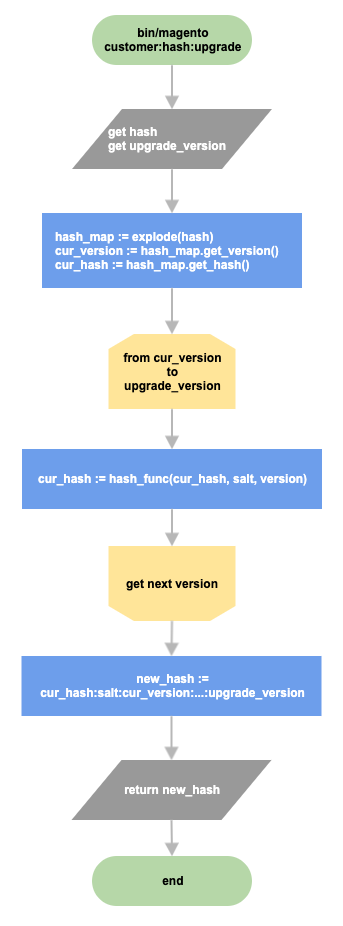Password hashing
Currently Magento uses its own strategy for password hashing, based on different native PHP hashing algorithms. Magento supports multiple algorithms like MD5, SHA256, or Argon 2ID13. If the Sodium extension is installed (installed by default in PHP 7.2), then Argon 2ID13 will be chosen as the default hashing algorithm. Otherwise, SHA256 will be as default. As Magento still supports PHP 7.1.x, we cannot use the native PHP password_hash function with Argon 2i algorithm support, which was added in the PHP 7.2 release.
To avoid compromising older passwords that have been hashed with outdated algorithms like MD5, the current implementation provides a method to upgrade the hash without changing the original password. In general, the password hash has the following format:
1
password_hash:salt:version<n>:version<n>
where version<n>…version<n> represents all the hash algorithms versions used on the password. Also, the salt is always stored together with the password hash, so we can restore the entire chain of algorithms. An example looks like:
1
a853b06f077b686f8a3af80c98acfca763cf10c0e03597c67e756f1c782d1ab0:8qnyO4H1OYIfGCUb:1:2
The first part represents the password hash. The second, 8qnyO4H1OYIfGCUb is the salt. The last two are the different hash algorithms: 1 is SHA256 and 2 is Argon 2ID13. This means that the customer’s password was originally hashed with SHA256 and after that, the algorithm was updated with Argon 2ID13 and the hash was re-hashed with Argon.
Upgrade hash strategy
Consider what the hash upgrade mechanism looks like. Assume that originally, a password was hashed with MD5 and then the algorithm was updated multiple times with Argon 2ID13. The following diagram shows the hash upgrade flow.

Each hash algorithm uses the previous password hash to generate a new hash. Magento does not store the original, raw password.

As discussed above, the password hash might have multiple hash versions applied to the original password. Here is how the password verification mechanism works during a customer authentication.
1
2
3
4
5
6
7
8
9
10
11
12
13
def verify(password, hash):
restored = password
hash_map = extract(hash)
# iterate through all versions specified in the received hash [md5, sha256, argon2id13]
for version in hash_map.get_versions():
# generate new hash based on password/previous hash, salt and version
restored = hash_func(salt . restored, version)
# extract only password hash from the hash:salt:version chain
hash = hash_map.get_hash()
return compare(restored, hash)
Since Magento stores all used password hashes versions together with the password hash, we can restore the whole hash chain during the password verification. The hash verification mechanism is similar to the hash upgrade strategy: based on versions stored together with the password hash, the algorithm generates hashes from the provided password and returns the comparison result between hashed password and the database stored hash.
Implementation
The \Magento\Framework\Encryption\Encryptor class is responsible for password hash generation and verification. The bin/magento customer:hash:upgrade command upgrades a customer password hash to the latest hash algorithm.